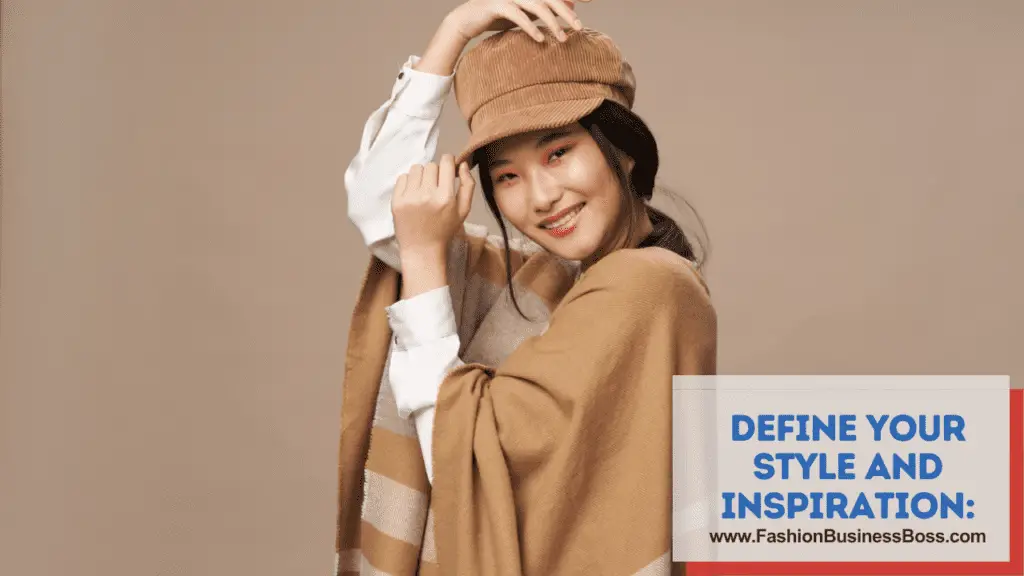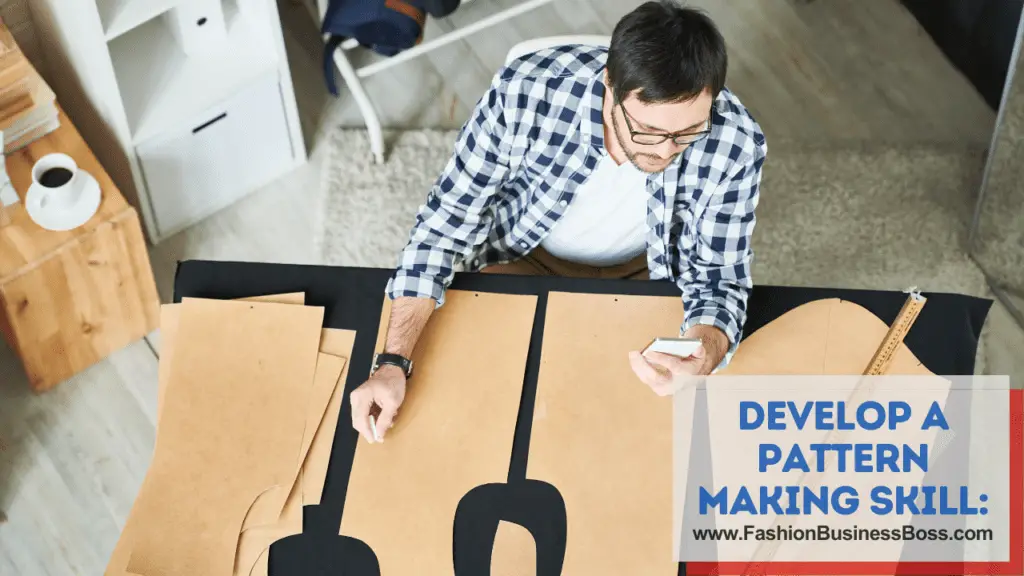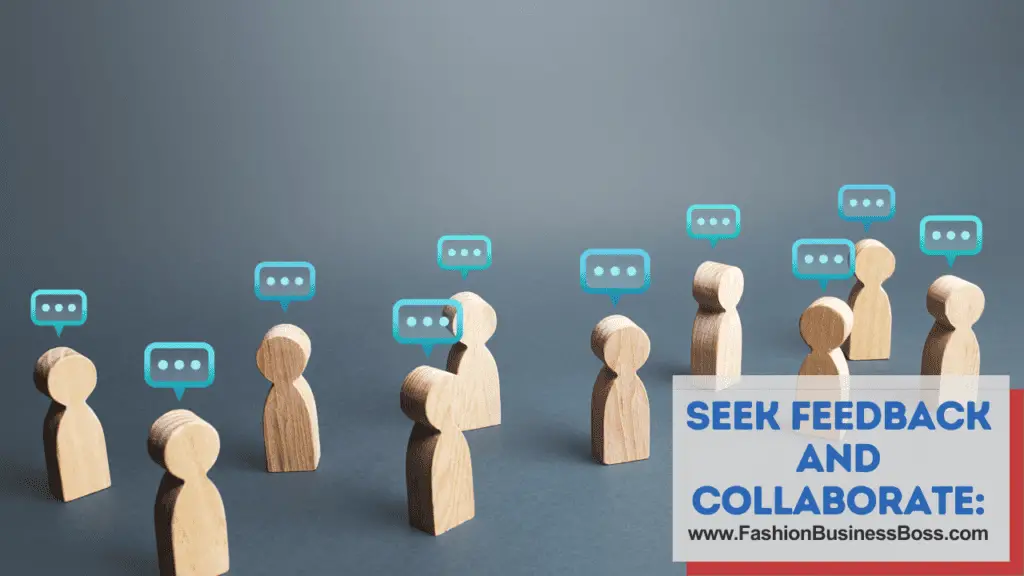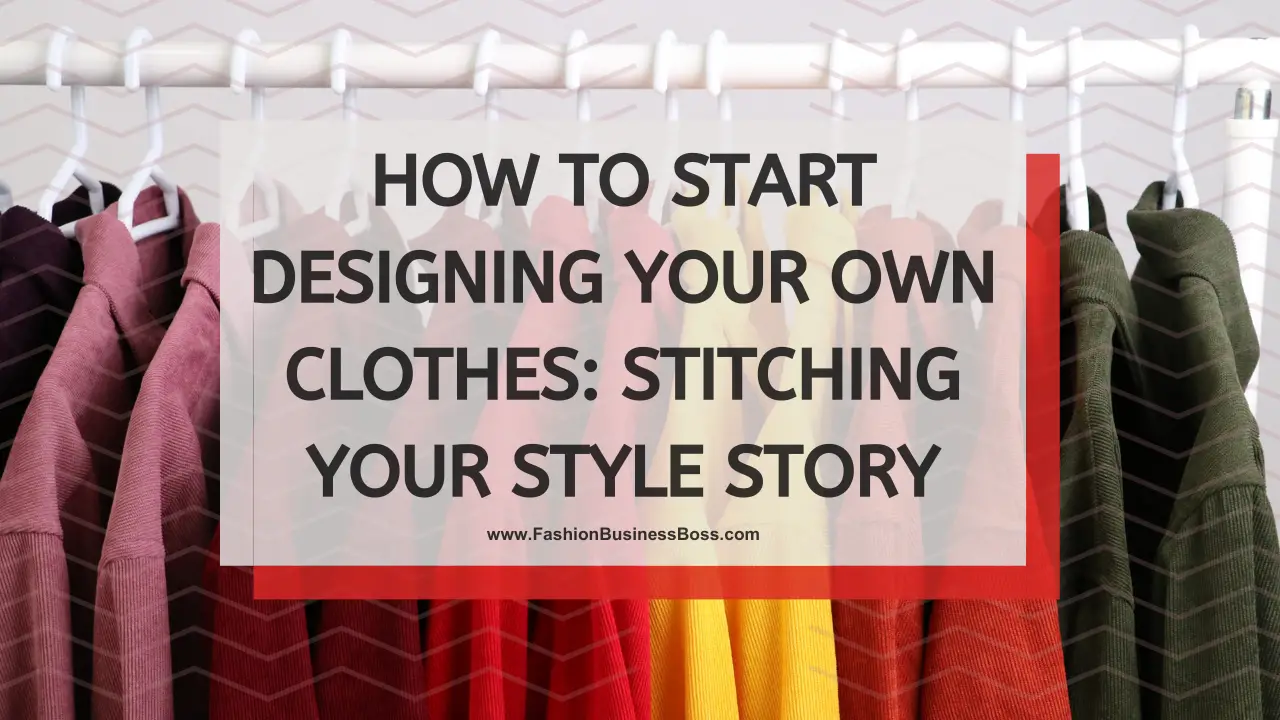Designing your own clothes is an exciting and rewarding creative endeavor that allows you to express your unique style and personality. Whether you aspire to create a full fashion line or simply wish to tailor a few pieces for yourself, this article will provide a step-by-step guide to help you get started.
To start designing your own clothes, first, explore your style and gather inspiration. Learn fashion design principles, practice sketching, and understand fabrics. Master patternmaking, create prototypes, and develop basic sewing skills. Embrace creativity, seek feedback, and consider sustainable practices.
1. Define Your Style and Inspiration:

Exploration and self-discovery lie at the heart of successful clothing design. Before delving into the technical aspects, take the time to understand your personal style and seek inspiration from the world around you. Immersing yourself in various fashion sources will help shape your creative direction.
Begin by exploring a wide range of fashion media, from glossy magazines and online platforms to social media channels. Collect images, articles, and ideas that resonate with your sense of aesthetics. Pay attention to color palettes, silhouettes, and detailing that captivate your imagination. These visual references will form the basis of your creative journey.
Assemble your inspirations into a mood board or sketchbook. This tangible representation of your preferences will provide a clearer vision of your design aspirations. Consider elements like textures, patterns, and fabric choices that appeal to you. Identify recurring themes or styles that showcase your uniqueness.
Understanding your style preferences will be instrumental in shaping your design choices. Whether you are drawn to minimalism, bohemian flair, or bold statements, this self-awareness will guide you through the exciting process of creating your own clothing designs.
Read more about Sporting Style Start-Up: Initiating Your Fitness Clothing Line
2. Learn the Basics of Fashion Design:
To translate your ideas into tangible garments, acquiring a solid foundation in fashion design principles is essential. Familiarize yourself with fundamental concepts like proportion, balance, and composition. These elements play a crucial role in creating visually appealing and well-structured designs.
Study various garment styles, from classic to contemporary, to broaden your design vocabulary. Analyze how different clothing pieces are constructed and how they fit on the body. Understanding garment anatomy will help you develop technical expertise in design execution.
Deepen your knowledge of fabric types and their unique characteristics. Each fabric behaves differently, and comprehending their attributes will influence your design decisions. A grasp of fabric properties will empower you to choose the most suitable materials for your envisioned creations.
To accelerate your learning journey, consider enrolling in online fashion courses or attending workshops led by experienced designers. Books on fashion design offer valuable insights into industry practices and historical perspectives. Engaging with these resources will broaden your perspective and provide a comprehensive understanding of the fashion design realm.
By combining artistic flair with technical know-how, you will unleash your creative potential and embark on a fulfilling path of designing stunning and innovative clothing pieces.
3. Master Sketching and Illustration:
Sketching and illustration serve as the visual language of a fashion designer, translating ideas from the mind onto paper. To effectively communicate your design concepts, practice is key. Begin by sketching fashion figures in various poses, capturing different body shapes and movements. This skill will enable you to showcase how your garments will look and drape on the human form.
Don’t be overly critical of your early attempts; instead, focus on clarity and conveying your ideas. Embrace imperfections as stepping stones to improvement. With regular practice, you’ll notice a significant enhancement in your sketching skills and the ability to express your creativity effortlessly.
Experiment with detailing your designs, paying attention to elements such as necklines, sleeve variations, and embellishments. Precise illustrations help envision the intricate elements of your garments and provide a solid foundation for pattern-making and construction.
As you refine your sketching abilities, consider exploring digital tools for illustration. Graphic design software and tablet-based applications offer versatile options for refining and presenting your designs professionally. Embracing technology can streamline your creative process and open doors to new possibilities in fashion visualization.
4. Understand Fabrics and Materials:
An in-depth knowledge of fabrics and materials is the backbone of successful clothing design. Each fabric possesses unique properties that influence how a garment looks and feels. Start by learning about different fabric types, from natural fibers like cotton and silk to synthetic materials such as polyester and nylon.
Understand how fabric choices impact the drape, texture, and overall appearance of a design. For instance, flowing fabrics are ideal for creating ethereal dresses, while sturdier fabrics lend themselves to structured pieces. Consider the seasonality and functional aspects of your designs, as fabric choice affects the wearability and comfort of the final product.
Visit fabric stores to handle and feel different fabrics, noting their weight, stretch, and texture. This hands-on experience enhances your understanding of the materials’ properties and guides you in selecting the perfect fabric for each design.
Delve into sustainable and eco-friendly fabric options, which are gaining prominence in the fashion industry. Ethical material choices contribute to a positive impact on the environment and align with the growing demand for sustainable fashion.
By becoming well-versed in fabrics and materials, you’ll elevate the quality of your designs and create garments that seamlessly harmonize with your creative vision.
5. Develop a Patternmaking Skill:

Patternmaking is a fundamental skill in fashion design, as it bridges the gap between your design concepts and the actual construction of garments. Although it may seem intricate at first, taking a step-by-step approach is key to mastering this craft.
Start by understanding basic patternmaking principles and terminologies. Invest in a reliable patternmaking book or consider enrolling in patternmaking classes. These resources will guide you through essential techniques such as dart manipulation, grading, and adding seam allowances.
As you gain confidence, progress to more complex designs. Experiment with different styles and silhouettes to broaden your patternmaking repertoire. Learning how to create patterns for various body shapes and sizes will enhance your ability to cater to diverse clientele.
Embrace technology in patternmaking by exploring patternmaking software and online tools. These resources offer efficiency and precision in creating patterns digitally, making it easier to edit and adjust designs as needed.
Remember, patternmaking is an iterative process. Don’t be discouraged by initial challenges; embrace mistakes as valuable learning experiences. With patience and practice, you’ll refine your patternmaking skills, ultimately becoming adept at translating your creative visions into well-fitting garments.
Read more about How to Start Your Clothing Line: Embrace Your Fashion Vision
6. Create Mock-ups and Prototypes:
Once you have developed your patterns, the next crucial step is to create mock-ups or prototypes of your designs. Mock-ups, also known as muslins, are made from inexpensive fabrics and serve as trial versions of your garments. This step is vital for ensuring that your designs achieve the desired fit and aesthetics.
Use muslin fabric or any low-cost material that closely resembles your final fabric choice. Cut and sew the mock-up according to your pattern, taking care to follow the instructions precisely. As you evaluate the fit, make notes of necessary adjustments for improvement.
Be prepared for several iterations during the prototype phase. Pattern alterations and refinements may be required to achieve the perfect fit and proportions. Keep an open mind and be willing to experiment to find the most flattering and comfortable design.
Prototyping provides invaluable insights into the construction process, helping you identify potential challenges and solutions before working with expensive materials. It also allows you to visualize your designs in three dimensions and make any design modifications based on how the garment looks on the body.
By creating mock-ups and prototypes, you ensure that your final designs meet your expectations and deliver garments that exude quality, fit, and craftsmanship. This iterative process is a hallmark of successful fashion design, one that results in the creation of exceptional and refined clothing pieces.
7. Learn Sewing Techniques:
While collaborating with skilled seamstresses or tailors is beneficial, having a basic understanding of sewing techniques empowers you as a fashion designer. Familiarity with sewing allows you to communicate your design vision more effectively and make informed decisions during the construction process.
Begin your sewing journey with simple projects, such as sewing basic seams, hemming, and attaching buttons. Gradually progress to more complex techniques, such as zipper installation, darts, and pleats. Practice is essential, so dedicate time to perfecting each stitch until you feel confident in your abilities.
Online resources are abundant for learning sewing techniques. YouTube tutorials, sewing blogs, and online classes offer step-by-step instructions and visual demonstrations. These platforms allow you to learn at your own pace and revisit concepts as needed.
As you enhance your sewing skills, experiment with different fabrics and thread types. Understanding how various fabrics behave during sewing will help you choose the best combinations for your designs. Additionally, explore different machine settings and stitches to achieve professional-looking finishes.
Sewing knowledge not only enriches your design process but also enables you to troubleshoot and solve construction challenges. This invaluable skill set empowers you to bring your designs to life, ensuring that your vision is realized in the final garment.
8. Experiment with Embellishments:
Embellishments add personality and intrigue to your clothing designs, elevating them from ordinary to extraordinary. From delicate embroidery to dazzling sequins, there are various ways to embellish your creations and make them truly unique.
Begin by brainstorming how you want to incorporate embellishments into your designs. Consider the theme, style, and purpose of each garment. For example, a casual bohemian dress may benefit from embroidery accents, while an evening gown could shimmer with sequins.
Embrace moderation when incorporating embellishments. Aim for a balanced design that showcases the embellishments without overwhelming the overall aesthetic. Remember that simplicity can often be just as impactful as elaborate adornments.
Experiment with different techniques and materials. Appliqué adds texture, while beading and sequins create sparkle and dimension. Research various embellishment methods and explore ways to incorporate them creatively into your designs.
As you refine your embellishment skills, consider the practicality and comfort of the finished garment. Ensure that the embellishments do not hinder movement or cause discomfort during wear.
9. Seek Feedback and Collaborate:

Feedback and collaboration are invaluable aspects of the fashion design process. Sharing your designs with others allows you to gain different perspectives and constructive criticism, enabling you to refine your work further.
Start by seeking feedback from friends, family, or fellow fashion enthusiasts. Online communities and social media platforms can also serve as excellent forums for showcasing your designs and receiving input from a broader audience. Embrace both positive and constructive feedback, as it provides valuable insights that can lead to design enhancements.
Consider collaborating with other designers, seamstresses, or industry professionals. Collaborations open doors to fresh ideas and creative approaches, inspiring you to explore innovative design elements. Collaborators may bring complementary skills and expertise, leading to a more holistic and well-rounded fashion collection.
Collaboration also fosters a sense of community within the fashion industry, allowing you to network and learn from others’ experiences. Working together nurtures creativity and encourages mutual growth and development.
Remember that receiving feedback and collaborating with others is a continuous process. Stay receptive to new ideas and perspectives, and be willing to adapt and evolve your designs based on the insights you receive. Embracing feedback and collaboration enriches your creative journey, pushing your designs to new heights of innovation and excellence.
10. Embrace Sustainability and Ethical Practices:
Fashion plays a significant role in environmental and social issues, and as a designer, you have the opportunity to make a positive impact. Embracing sustainability and ethical practices in your design process can set your brand apart and attract an increasingly conscious consumer base.
Consider using sustainable and eco-friendly fabrics in your designs. Organic cotton, hemp, and bamboo are environmentally friendly alternatives to conventional fabrics. These materials reduce the fashion industry’s carbon footprint and minimize environmental degradation.
Adopting ethical production practices ensures fair treatment of workers and safeguards their rights. Collaborate with manufacturers and artisans who follow ethical standards, such as fair wages and safe working conditions. Emphasize quality over quantity, promoting slow fashion by creating durable and timeless pieces that resist the throwaway culture.
Promote transparency and traceability in your supply chain. Educate consumers about the origins of your materials and the production process. Transparency builds trust and allows customers to make informed choices aligned with their values.
As a sustainable fashion advocate, use your platform to raise awareness about environmental and social issues within the industry. Participate in initiatives and campaigns that advocate for positive change in fashion.
By embracing sustainability and ethical practices, you contribute to a more responsible and conscious fashion industry. Your commitment to these values not only shapes your brand’s identity but also aligns with the growing demand for eco-friendly and socially responsible fashion choices.
Conclusion
Designing your own clothes is a fulfilling journey that requires a blend of creativity, technical knowledge, and dedication. As you progress in your fashion design pursuits, remember to stay true to your unique style, continue learning, and embrace opportunities to collaborate and grow. The world of fashion design is ever-evolving, and your passion and commitment to your craft will set you on the path to success as you bring your visions to life through clothing design. Happy designing!
Frequently Asked Questions

1. How can I make my designs stand out?
Experiment with unique details, embellishments, or color combinations that reflect your individuality and design vision.
2. Can I design clothes without sewing them myself?
Absolutely! You can collaborate with skilled seamstresses or tailors to bring your designs to life.
3. How can I get feedback on my designs?
Share your work with friends, family, or online fashion communities. Participate in fashion forums or seek professional critiques.
To learn more about starting your own clothing business, check out my startup documents here.
Please note that the contents of this blog are for informational and entertainment purposes only and should not be construed as legal advice. Any action taken based on the information provided in this blog is solely at your own risk. Additionally, all images used in this blog are generated under the CC0 license of Creative Commons, which means they are free to use for any purpose without attribution.

Meet Shawn Chun: Entrepreneur and Fashion Business Fan.
I’m a happy individual who happens to be an entrepreneur. I have owned several types of businesses in my life from a coffee shop to an import and export business to an online review business plus a few more and now I create online resources for those interested in starting new ventures. It’s demanding work but I love it. I do it for those passionate about their business and their goals. That’s why when I meet a designer or boutique owner at a craft fair, farmers market, retail location or anywhere else I see myself. I know how hard the struggle is to retain clients, find good employees and keep the business growing all while trying to stay competitive.
That’s why I created Fashion Business Boss: I want to help fashion business owners like you build a thriving business that brings you endless joy and supports your ideal lifestyle.

